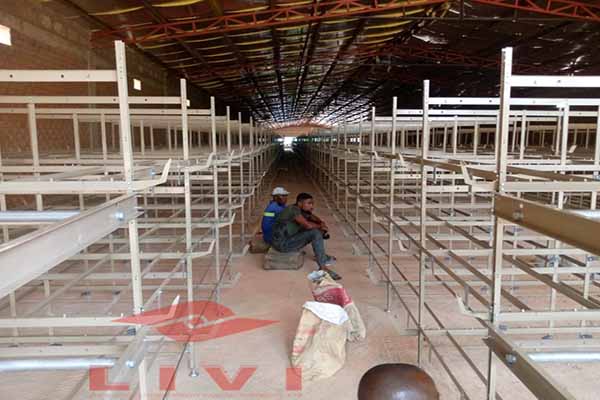Installation Case of Automatic Ventilation System in Kenyan Chicken Farms
Time : 2025-07-03
The poultry industry in Kenya has experienced significant growth over the years, with an increasing number of chicken farms popping up across the country. One of the key components of a successful chicken farm is an efficient ventilation system. This article provides a detailed case study of the installation of an automatic ventilation system in a Kenyan chicken farm, focusing on the benefits, challenges, and best practices involved in the process.
Introduction to Automatic Ventilation Systems
Automatic ventilation systems are designed to regulate the air quality within poultry houses, ensuring that the right balance of temperature, humidity, and air exchange is maintained. These systems are crucial for the health and productivity of the chickens, as poor air quality can lead to respiratory diseases and reduced egg production.
The Case Study: Kenyan Chicken Farm
Farm Background
The farm in question is a medium-sized chicken farm located in Rift Valley, Kenya. The farm has a capacity of 20,000 chickens and operates year-round. The farm owner, John, has been in the poultry business for over a decade and was looking to upgrade his farm’s infrastructure to enhance productivity and efficiency.
Challenges Faced
Before installing the automatic ventilation system, John faced several challenges:
1. Manual Ventilation: The farm was initially equipped with manual ventilation systems, which required constant monitoring and adjustment to maintain optimal conditions.
2. Health Issues: The manual systems were not effective in preventing respiratory diseases among the chickens, leading to increased mortality rates.
3. Egg Production: The egg production was not at its peak due to suboptimal environmental conditions.
Solution: Automatic Ventilation System
John decided to invest in an automatic ventilation system to address these challenges. The system was installed by a reputable supplier specializing in poultry equipment and services.
System Components
The automatic ventilation system for the Kenyan chicken farm comprised the following components:
1. Control Unit: The heart of the system, which processes sensor data and adjusts the ventilation settings accordingly.
2. Sensors: Temperature, humidity, and carbon dioxide sensors to monitor the environment continuously.
3. Blowers and Fans: To supply fresh air and exhaust stale air from the poultry house.
4. Shutters and Louvers: To control the airflow into the house based on the sensor data.
5. Data Monitoring Software: To provide real-time data and historical analysis for the farm owner.
Installation Process
The installation process was carried out in the following stages:
1. Site Assessment: A team of experts assessed the farm’s layout and environment to determine the optimal placement of sensors and ventilation equipment.
2. Equipment Installation: The sensors, blowers, fans, and control unit were installed according to the assessment.
3. System Calibration: The system was calibrated to ensure accurate readings and optimal performance.
4. Training: The farm staff were trained on how to operate and maintain the system.
Benefits of the Automatic Ventilation System
The installation of the automatic ventilation system brought about several benefits:
1. Improved Air Quality: The system effectively regulates the air quality, reducing the risk of respiratory diseases among the chickens.
2. Enhanced Egg Production: The optimal environmental conditions have led to a significant increase in egg production.
3. Reduced Costs: The system’s energy efficiency has helped in reducing electricity consumption, thereby cutting down operational costs.
4. Ease of Operation: The automatic system requires minimal manual intervention, allowing the farm staff to focus on other tasks.
Challenges and Solutions
Despite the benefits, the installation process was not without its challenges:
1. Initial Investment: The initial cost of the system was a concern for John. However, he realized that the long-term benefits outweighed the initial investment.
2. Technological Barriers: Some farm staff found it challenging to adapt to the new technology. Regular training sessions helped in addressing this issue.
Best Practices for Automatic Ventilation System Installation
To ensure the success of an automatic ventilation system installation, the following best practices should be followed:
1. Thorough Planning: Careful planning and site assessment are crucial for the optimal placement of equipment.
2. Professional Installation: Hiring a reputable supplier for installation ensures the system’s proper functioning.
3. Regular Maintenance: Regular maintenance is essential to keep the system running efficiently.
4. Staff Training: Proper training of farm staff on the operation and maintenance of the system is vital.
Conclusion
The installation of an automatic ventilation system in the Kenyan chicken farm has proven to be a successful venture. The system has not only improved the farm’s productivity but has also helped in reducing operational costs. As the poultry industry continues to grow in Kenya, the adoption of advanced technologies like automatic ventilation systems will play a crucial role in ensuring sustainable and profitable farming practices.
Tags












